Spherical acoustics outside vacuum: advantages, subjective assessment, production
In preparing the articles of the cycle “Anatomy of Home Acoustic Systems”, I missed an important point regarding the acoustic design - the spherical shape of the body. With this material I want to fill the gap of the cycle and tell in detail about the good spheres as a shell for speakers. In addition, the post will be a little information about the industrial production of such systems in Russia, which carries the company Deluxe Acoustics.

I want to note that despite the comparative effectiveness of the spherical shape of the body, such speakers rarely appear on the market. The reason is the relative labor cost of production and the resulting high cost. As a rule, such systems are experimental concepts, or small-scale astronomically expensive high-end. Deluxe Acoustics is one of the few companies in the world who ventured to organize the mass production of spherical acoustics and is probably the only one that has made spherical bodies the basic concept of acoustic design and design.
Under the cat in detail about the advantages of spherical acoustic design, the history of the production of spherical acoustics in the Russian Federation, the subjective assessment of the sound of the floor speaker from Deluxe Acoustics and a small photo report on the production of these systems.
I will begin, as usual, with a brief historical excursion. In 1951, one of the pioneers of modern acoustic research, sound engineer at RCA Records, author of 35 patents, Harry F. Olson, conducted a study on the effectiveness of speaker enclosures of various shapes. Olson's research has shown that rectangular-wave speakers are highly susceptible to diffraction, which appears in connection with the bending and reflection of sound waves from external boundaries. This phenomenon does not have a beneficial effect on the fidelity of reproduction. Diffraction effects are detrimental to the uniformity of the amplitude-frequency characteristics of the AU. So for a cube, the non-uniformity of the frequency response reaches ± 5 dB, and for cabinets created from rectangular panels - ± 3 dB.
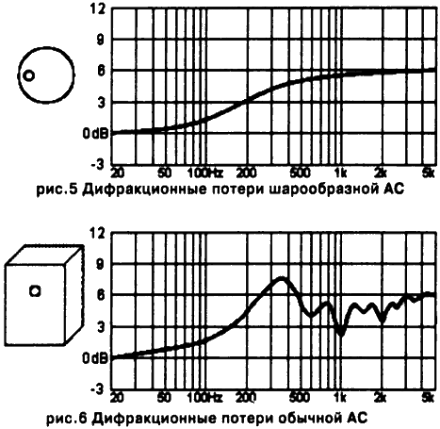
In addition, straight parallel walls lead to numerous internal cross-reflections of the wave, i.e. generated so-called. standing waves. They are trying to solve this problem due to a thick layer of damping materials or a labyrinth design. The effectiveness of the first solution often leaves much to be desired, the second - fabulously expensive. The use of powerful dampers can significantly reduce the sensitivity, especially at low frequencies. “Thanks to” standing reflections in the stereo panorama, in addition to seeming sound sources, you can clearly identify the real sources — the right and left channels. In most speakers with a rectangular shape, this effect cannot be completely eliminated.
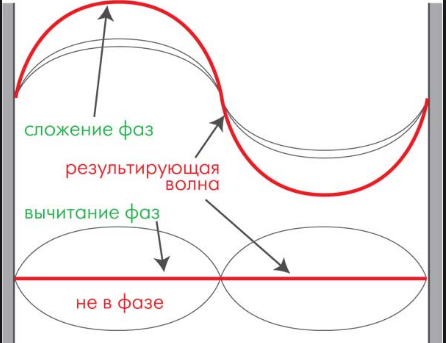
Guaranteed disposal of standing waves can give the body without direct and close to right angles, i.e. by reducing the number of reflections (as sources of resonance). Such a body is a sphere. Due to the smooth shape of the surface adjacent to the loudspeaker head, it is possible to get rid of diffraction. In addition, spherical loudspeakers of the AU are made of materials with a high damping factor, additionally filled with a relatively small layer of “damper”, which in turn further reduces the likelihood of unwanted resonant overtones.
Among domestic authors, Verkhovtsev and Lyutov wrote about the advantages of the spherical form of the AU — the authors of the periodical “Practical advice to the master amateur. Electronics. Electrical engineering. Materials and their processing ”(1988, p. 93), And also Irina Aldoshina (St. Petersburg State University) and Alexander Voishvillo (JBL)“ High-quality acoustic systems and radiators ”.
In 1994, the Russian engineer and inventor Alexey Dorokhov created a 3-way speaker system, unique for that time, with a spherical body. The diameter of the large sphere in which the low-frequency module was located was 425 mm, like in a standard Soviet school globe. On the main spherical module were mounted rotating mid and high frequency boxes. For the unusual appearance of the invention was called "alien". It is known that the prototype of this speaker was an ordinary globe into which the speaker was inserted.
In 2012, Alexey Dorokhov and Valery Panteleymonov in St. Petersburg founded the Deluxe Acoustics company. Having quickly created an equipped production base and having developed the necessary technological cycles, the company began producing acoustic systems with spherical bodies. The new speakers were developed on the basis of the 1994 “alien”.

In 2015, Alexey Dorokhov decided to patent his acoustic systems with spherical bodies. Patent
Interestingly, in addition to the shape of the case, Dorokhov’s invention contains many other original engineering solutions. For example:
Special mention deserves the cost of the company's devices, which, given the manual assembly, is quite democratic by the standards of High End. In the catalog of our company, depending on the type (shelves, wall-mounted, floor standing), the cost of the Deluxe Acoustics speakers varies in the range of 30 to 160 thousand rubles.
As a test, I decided to subjectively evaluate the floor acoustics of the Deluxe Acoustics Sound Flowers DAF-300 , worth 133,000. Before describing the subjective sensations, I recommend you to familiarize yourself with the technical characteristics of the speakers.
For listening, the Japanese amplifier Rotel RKB-850 was used. The source is the Cowon media player.
Musical material (all files in flac format digitized from original CDDA sources):
Mozart V.A. - Dies Irae - Requiem, State Chapel, Moscow, managed by E. Almazov (1994)
Metallica - Fade to black - “Ride the lightning” (1984)
25/17 - Bitter Mist - “Russian Plantain” (2014).
The system left a very pleasant impression. I am not a big connoisseur of audiophile epithets, but I can characterize the sound of the AU as accurate, almost monitor. The most characteristic feature is the absence of clearly localized real sources, with a realistic panorama and well-localized apparent sound sources (CID). The scene (stereopanorama) feels as volumetric and deep; when moving around the showroom, the CID does not “float away”, which is probably due to a wide radiation pattern. Subjectively, the frequency response is felt as relatively even, the intensity of the frequencies is balanced. HF and LF are quiet, which may not be very impressive for people who love their accented reproduction. The midrange is heard as distinct and bright. In my opinion, the main advantage of the system is the intensity of the stereo effect and the volume of the sound, which is completely correlated with the theoretical basis on which it was developed.
I think it would be appropriate to talk about some of the features of the production of Deluxe Acoustics, and provide photos of the production process.
Spheres are made on CNC machines. Acceptable errors in the processing of acoustically significant surfaces are less than 0.5 mm.

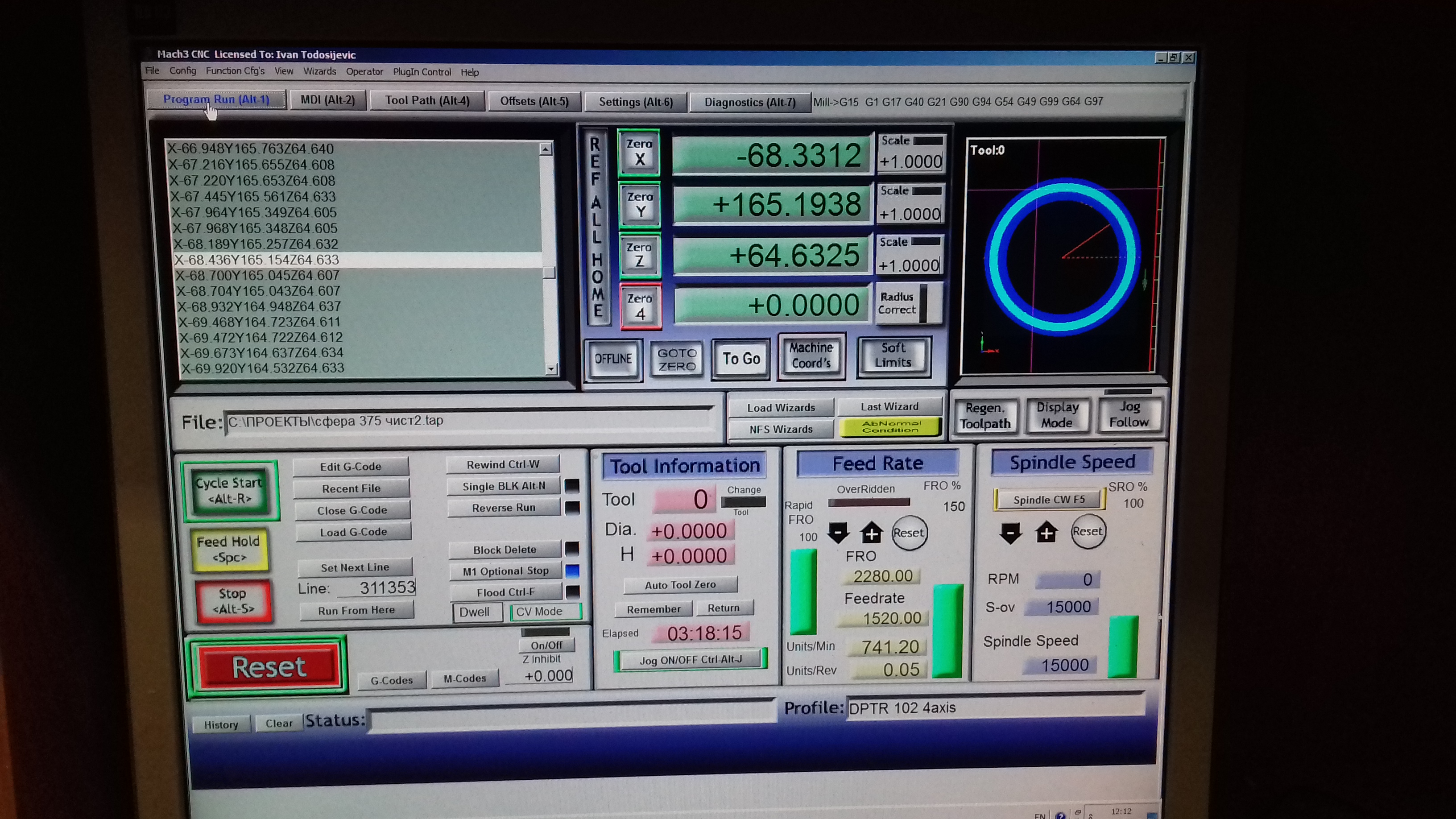
After this, the blanks are painted and dried thoroughly.

To prevent damage, before the beginning of one or another stage, the blanks are stored on specially equipped racks to prevent deformation.

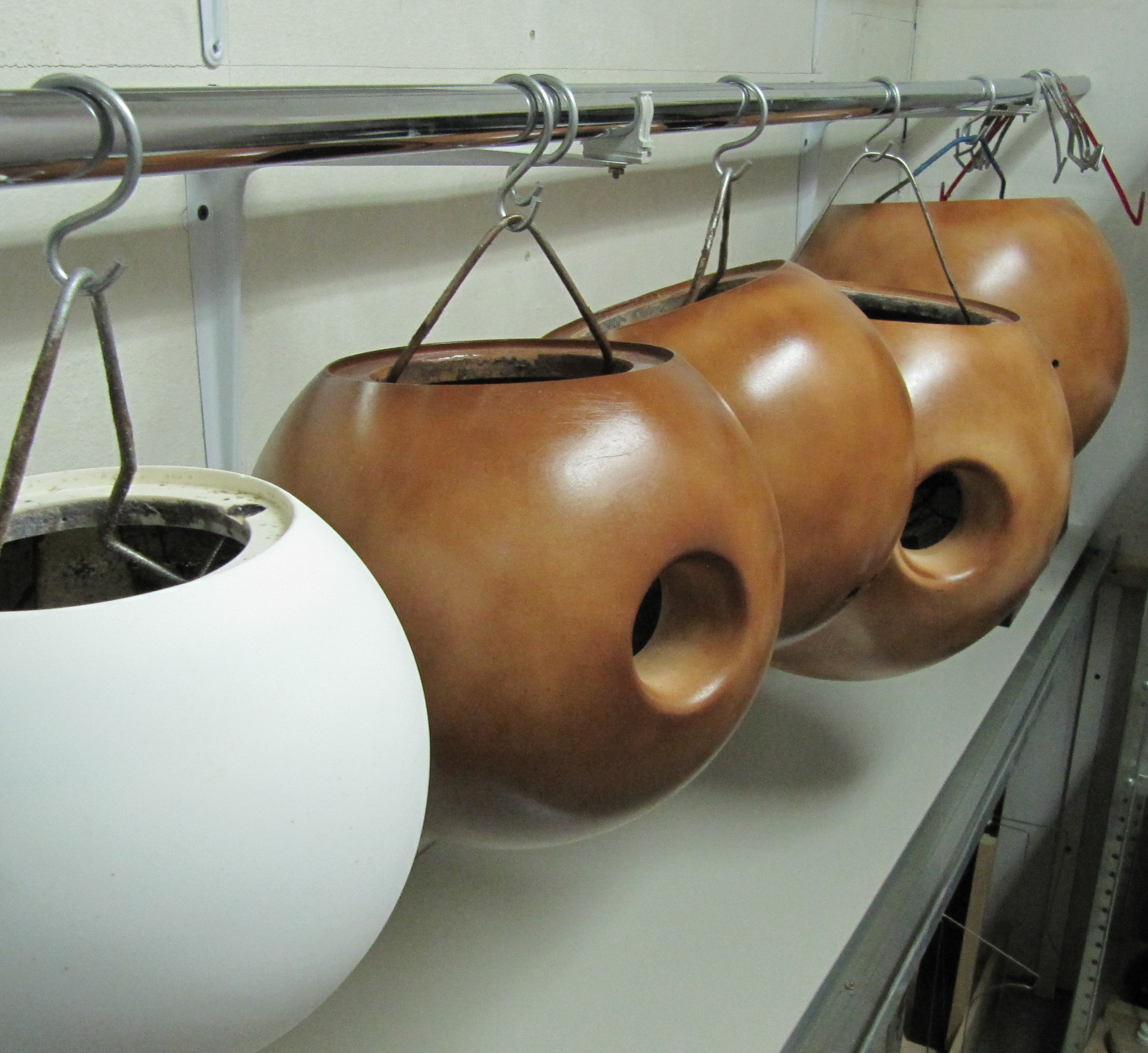
The next step is the flocking of external surfaces.
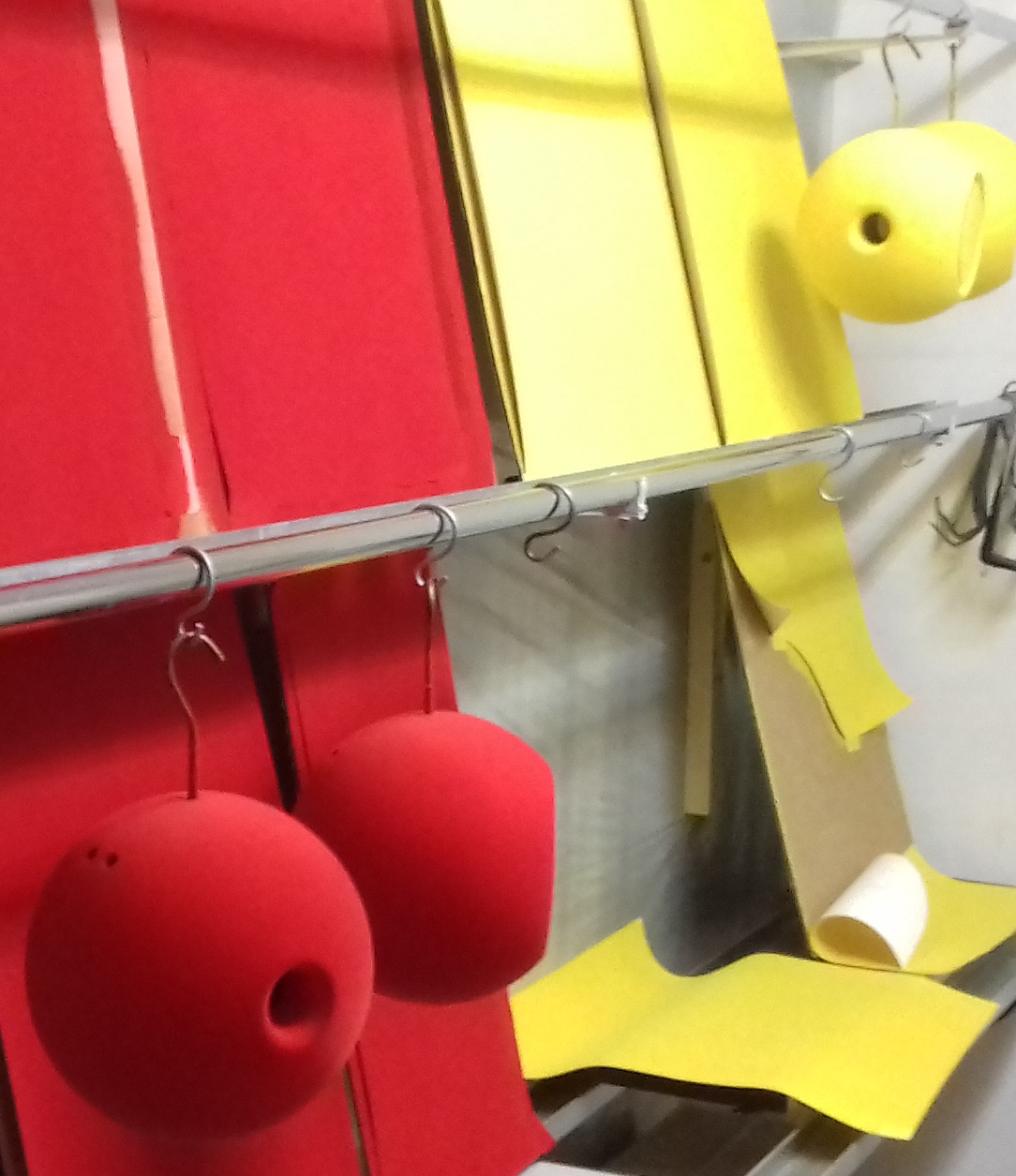
The assembly of the systems is done manually.

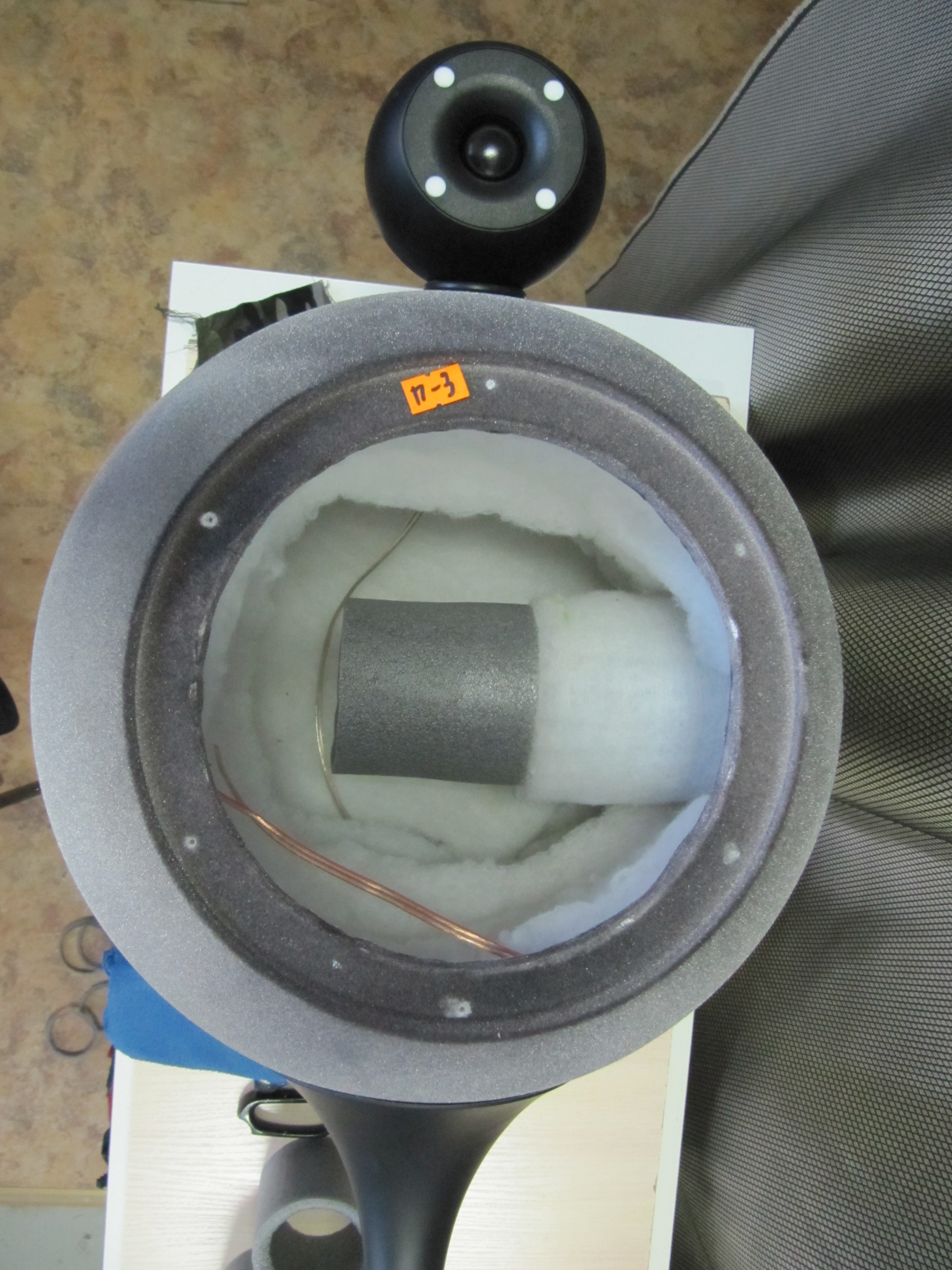
After thorough testing and selection (each system is checked), the speakers are packaged and sold.
Without hypocritical patriotism, I can say that these speakers are not inferior to their Western counterparts, and some of them are significantly superior. It should also be noted that the principles on the basis of which this acoustics was developed are not part of the audio religion, but have proven grounds. Today AC Deluxe Acoustics are in demand not only in Russia, but also abroad. In 2015, its products entered the top 40 new products among world manufacturers of speakers at CES in Las Vegas. I am pleased that in the Russian Federation there are companies that can compete in a fairly close market for high-quality audio.
By tradition - a small survey on the topic.

I want to note that despite the comparative effectiveness of the spherical shape of the body, such speakers rarely appear on the market. The reason is the relative labor cost of production and the resulting high cost. As a rule, such systems are experimental concepts, or small-scale astronomically expensive high-end. Deluxe Acoustics is one of the few companies in the world who ventured to organize the mass production of spherical acoustics and is probably the only one that has made spherical bodies the basic concept of acoustic design and design.
Under the cat in detail about the advantages of spherical acoustic design, the history of the production of spherical acoustics in the Russian Federation, the subjective assessment of the sound of the floor speaker from Deluxe Acoustics and a small photo report on the production of these systems.
Advantages of the sphere or why it is all necessary
I will begin, as usual, with a brief historical excursion. In 1951, one of the pioneers of modern acoustic research, sound engineer at RCA Records, author of 35 patents, Harry F. Olson, conducted a study on the effectiveness of speaker enclosures of various shapes. Olson's research has shown that rectangular-wave speakers are highly susceptible to diffraction, which appears in connection with the bending and reflection of sound waves from external boundaries. This phenomenon does not have a beneficial effect on the fidelity of reproduction. Diffraction effects are detrimental to the uniformity of the amplitude-frequency characteristics of the AU. So for a cube, the non-uniformity of the frequency response reaches ± 5 dB, and for cabinets created from rectangular panels - ± 3 dB.

In addition, straight parallel walls lead to numerous internal cross-reflections of the wave, i.e. generated so-called. standing waves. They are trying to solve this problem due to a thick layer of damping materials or a labyrinth design. The effectiveness of the first solution often leaves much to be desired, the second - fabulously expensive. The use of powerful dampers can significantly reduce the sensitivity, especially at low frequencies. “Thanks to” standing reflections in the stereo panorama, in addition to seeming sound sources, you can clearly identify the real sources — the right and left channels. In most speakers with a rectangular shape, this effect cannot be completely eliminated.

Guaranteed disposal of standing waves can give the body without direct and close to right angles, i.e. by reducing the number of reflections (as sources of resonance). Such a body is a sphere. Due to the smooth shape of the surface adjacent to the loudspeaker head, it is possible to get rid of diffraction. In addition, spherical loudspeakers of the AU are made of materials with a high damping factor, additionally filled with a relatively small layer of “damper”, which in turn further reduces the likelihood of unwanted resonant overtones.
Among domestic authors, Verkhovtsev and Lyutov wrote about the advantages of the spherical form of the AU — the authors of the periodical “Practical advice to the master amateur. Electronics. Electrical engineering. Materials and their processing ”(1988, p. 93), And also Irina Aldoshina (St. Petersburg State University) and Alexander Voishvillo (JBL)“ High-quality acoustic systems and radiators ”.
AU from the school globe
In 1994, the Russian engineer and inventor Alexey Dorokhov created a 3-way speaker system, unique for that time, with a spherical body. The diameter of the large sphere in which the low-frequency module was located was 425 mm, like in a standard Soviet school globe. On the main spherical module were mounted rotating mid and high frequency boxes. For the unusual appearance of the invention was called "alien". It is known that the prototype of this speaker was an ordinary globe into which the speaker was inserted.
In 2012, Alexey Dorokhov and Valery Panteleymonov in St. Petersburg founded the Deluxe Acoustics company. Having quickly created an equipped production base and having developed the necessary technological cycles, the company began producing acoustic systems with spherical bodies. The new speakers were developed on the basis of the 1994 “alien”.

In 2015, Alexey Dorokhov decided to patent his acoustic systems with spherical bodies. Patent
Interestingly, in addition to the shape of the case, Dorokhov’s invention contains many other original engineering solutions. For example:
- attachment of the HF-link to the main body is carried out through a damping rubber-polyurethane foam gasket, which improves the antiresonant properties of the system;
- the inner coating of the multilayer spherical body consists of a sound-absorbing fiber, aluminum foil and butyl rubber mastic;
- for maximum elimination of the reflection of the HF spectrum from the outer side of the body and more distinct drawing of the stereo-panorama, the surfaces of the balls are covered with a flock.
- Details about all the innovations of this AU can be found in the description of the patent application (link above).
Special mention deserves the cost of the company's devices, which, given the manual assembly, is quite democratic by the standards of High End. In the catalog of our company, depending on the type (shelves, wall-mounted, floor standing), the cost of the Deluxe Acoustics speakers varies in the range of 30 to 160 thousand rubles.
Subjective impressions
As a test, I decided to subjectively evaluate the floor acoustics of the Deluxe Acoustics Sound Flowers DAF-300 , worth 133,000. Before describing the subjective sensations, I recommend you to familiarize yourself with the technical characteristics of the speakers.
- Power, W: 100;
- Number of lanes: 2;
- Frequency range: 40Hz - 21000Hz;
- Resistance: 4 Ohm;
- Type of tweeter: dome;
- Type of woofer: cone;
- Tweeter size: 1 in inches;
- Sensitivity, dB / W / m: 90;
- SOI + noise: less than 1%;
- Type LF-Mid Box: bass reflex;
- HF-box type: closed.
For listening, the Japanese amplifier Rotel RKB-850 was used. The source is the Cowon media player.
Musical material (all files in flac format digitized from original CDDA sources):
Mozart V.A. - Dies Irae - Requiem, State Chapel, Moscow, managed by E. Almazov (1994)
Metallica - Fade to black - “Ride the lightning” (1984)
25/17 - Bitter Mist - “Russian Plantain” (2014).
The system left a very pleasant impression. I am not a big connoisseur of audiophile epithets, but I can characterize the sound of the AU as accurate, almost monitor. The most characteristic feature is the absence of clearly localized real sources, with a realistic panorama and well-localized apparent sound sources (CID). The scene (stereopanorama) feels as volumetric and deep; when moving around the showroom, the CID does not “float away”, which is probably due to a wide radiation pattern. Subjectively, the frequency response is felt as relatively even, the intensity of the frequencies is balanced. HF and LF are quiet, which may not be very impressive for people who love their accented reproduction. The midrange is heard as distinct and bright. In my opinion, the main advantage of the system is the intensity of the stereo effect and the volume of the sound, which is completely correlated with the theoretical basis on which it was developed.
Production - photo essay
I think it would be appropriate to talk about some of the features of the production of Deluxe Acoustics, and provide photos of the production process.
Spheres are made on CNC machines. Acceptable errors in the processing of acoustically significant surfaces are less than 0.5 mm.


After this, the blanks are painted and dried thoroughly.

To prevent damage, before the beginning of one or another stage, the blanks are stored on specially equipped racks to prevent deformation.


The next step is the flocking of external surfaces.

The assembly of the systems is done manually.


After thorough testing and selection (each system is checked), the speakers are packaged and sold.
Total
Without hypocritical patriotism, I can say that these speakers are not inferior to their Western counterparts, and some of them are significantly superior. It should also be noted that the principles on the basis of which this acoustics was developed are not part of the audio religion, but have proven grounds. Today AC Deluxe Acoustics are in demand not only in Russia, but also abroad. In 2015, its products entered the top 40 new products among world manufacturers of speakers at CES in Las Vegas. I am pleased that in the Russian Federation there are companies that can compete in a fairly close market for high-quality audio.
By tradition - a small survey on the topic.
All Articles